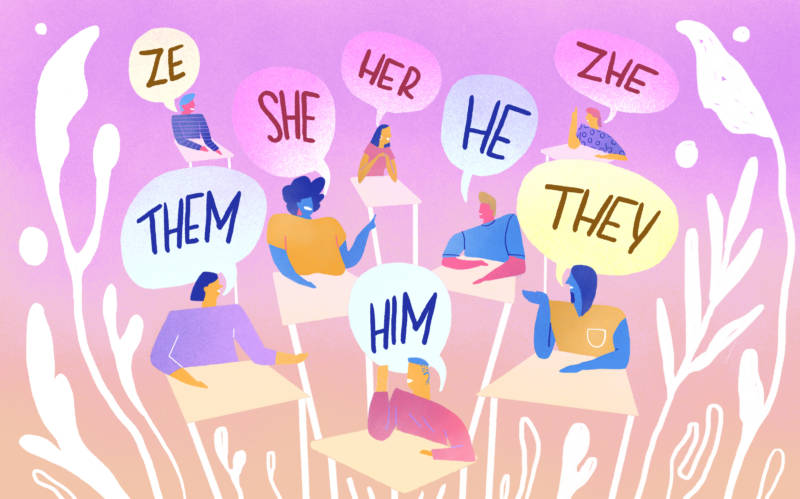Letter-for-letter, no part of speech gets people more worked up than pronouns do. Linguistic history is dotted with eruptions of pronoun rage. Right now, the provocation is the gender-neutral pronouns that some nonbinary people have asked to be called by, so that they won’t have to be identified as “he” or “she.”
There are several of these in circulation. Some are new words, like “ze” and “co,” but some go back a ways—in fact, people have been proposing new gender-neutral pronouns for 150 years, though none has ever caught on. But the most popular choice, and probably the most controversial one, is the familiar pronoun that people describe as the singular “they.”
You can see why people would pick “they.” In everyday speech we often use that pronoun for a single person, though only when the word or phrase it substitutes for—its antecedent, as it’s called—doesn’t refer to a specific individual. So we say, “Somebody lost their wallet,” or, “If a student fails, they have to retake the course.” Or the person we’re referring to may be simply unknown. Your daughter’s cell phone rings at the dinner table; you say, “Tell them you’ll call them back.” Male or female, one caller or several? The pronoun “they” is like, “whatever.”
That singular “they” goes back hundreds of years. Jane Austen’s novels are bristling with sentences like “No one can ever be in love more than once in their life.” But that use of the pronoun fell into disrepute in the 19th century, when grammarians condemned it as incorrect and proclaimed that the so-called generic “he” should be used instead. The idea is that when you write, “Every singer has his range,” the pronoun “his” refers to both men and women—or as they sometimes put it, “the masculine embraces the feminine.”
When second-wave feminists protested in the 1970s that the generic “he” was sexist, they roused a storm of indignation. They were accused of emasculating and neutering the language. The chairman of the Harvard Linguistics Department charged that they were suffering from “pronoun envy.” William Safire warned that to accept the use of “they” in place of “he” would be to “cave in to the radic-lib forces of usage permissiveness.”

9(MDAxOTAwOTE4MDEyMTkxMDAzNjczZDljZA004))

